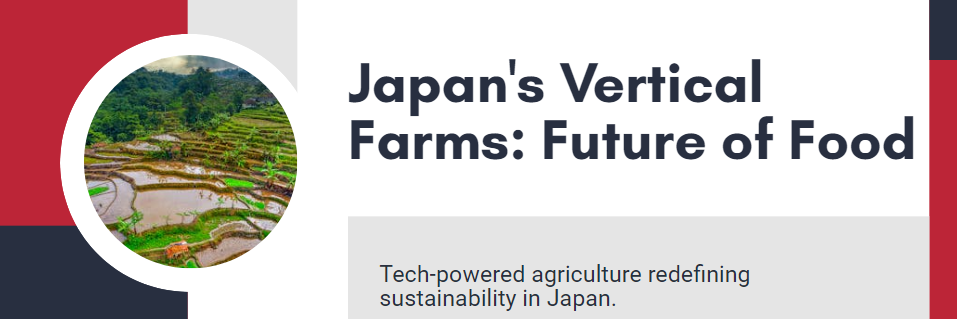Vertical Farming in Japan: Pioneering Sustainable Agriculture through Tech Innovation
1 year ago

1. Introduction
In the heart of Japan's bustling cities, a quiet revolution in agriculture is unfolding. Vertical farming, an innovative approach to food production, is reshaping how we think about farming in urban environments. Japan, a nation renowned for its technological prowess and limited arable land, is at the forefront of this transformation. This article delves into the intricacies of vertical farming in Japan, exploring its technological advancements, environmental impacts, and future prospects.
2. Understanding Vertical Farming in Japan
Vertical farming, a method where crops are grown in stacked layers, often in controlled environments, has found a fertile ground in Japan. This approach, integrating agriculture with technology, addresses Japan's unique challenges - limited space, a dense population, and the need for sustainable food sources. In Japan, vertical farms utilize sophisticated systems like hydroponics and LED lighting, allowing plants to thrive without traditional soil farming or natural sunlight. This ingenuity not only maximizes space but also enables year-round cultivation, regardless of external weather conditions.
3. Technological Innovations and Their Impact
The heart of Japan's vertical farming success lies in its technological innovations. These range from advanced climate control systems that create optimal growing conditions, to AI-driven analytics for monitoring plant health. One notable innovation is the use of specialized LED lights, which are calibrated to emit specific light spectra conducive to plant growth. This precision not only accelerates growth rates but also enhances the nutritional quality of the produce. Furthermore, automated systems for planting, watering, and harvesting have significantly reduced labor costs and increased efficiency, making vertical farming a viable and scalable solution in Japan's urban landscapes.
4. Environmental Impacts: A Green Revolution
Adopting vertical farming has profound environmental implications. In contrast to traditional agriculture, which often involves extensive land use and can contribute to deforestation, vertical farming presents a minimal environmental footprint. It reduces the need for land clearance and, thanks to its closed-loop systems, minimizes water usage by as much as 70% compared to conventional farming methods. Moreover, by situating farms in urban areas, Japan's vertical farming initiative drastically cuts down the transportation emissions associated with moving produce from rural to urban centers. This localized approach to food production is a significant stride towards reducing the carbon footprint of agriculture, aligning with global efforts to combat climate change.
5. Comparative Analysis: Vertical Farming vs. Traditional Farming
When juxtaposed with traditional farming practices, Japan's vertical farming paradigm stands out in several compelling ways. The most striking difference is in space efficiency. Vertical farms in Japan utilize vertical space, a boon in land-scarce urban areas, enabling a higher crop yield per square meter than traditional farming. This is particularly significant in a country like Japan, where only 12% of the land is suitable for agriculture. In terms of resource usage, vertical farms excel in water conservation and nutrient utilization, significantly reducing wastage. While traditional farming is often at the mercy of weather conditions, the controlled environment of vertical farms ensures consistent produce quality and yield throughout the year.
6. The Future of Vertical Farming in Japan
Looking ahead, the prospects of vertical farming in Japan are not just promising; they are a beacon of innovation in sustainable agriculture. The continual advancement in technology, such as the integration of IoT devices and more sophisticated AI, promises even greater efficiency and productivity in the near future. There's a growing trend towards diversifying the types of crops grown in these vertical systems, moving beyond leafy greens to fruits and even root vegetables. Additionally, as consumer awareness grows and demand for locally sourced, environmentally friendly produce increases, vertical farming is poised to become a staple in Japan's urban centers. This evolution aligns seamlessly with Japan's broader goals of technological advancement and sustainability, making it a vital component of the country's future food security strategy.
7. Conclusion
Vertical farming in Japan is more than just an agricultural trend; it's a testament to the country's innovative spirit and commitment to sustainability. By integrating cutting-edge technologies with traditional farming practices, Japan is addressing critical issues like food security, environmental sustainability, and urbanization. As this approach continues to evolve, it has the potential to not only revolutionize agriculture in Japan but also to serve as a model for countries worldwide grappling with similar challenges. The rise of vertical farming in Japan is a clear signal that the future of agriculture lies not just in the expansion of land, but in the smarter, more sustainable use of space and resources.
